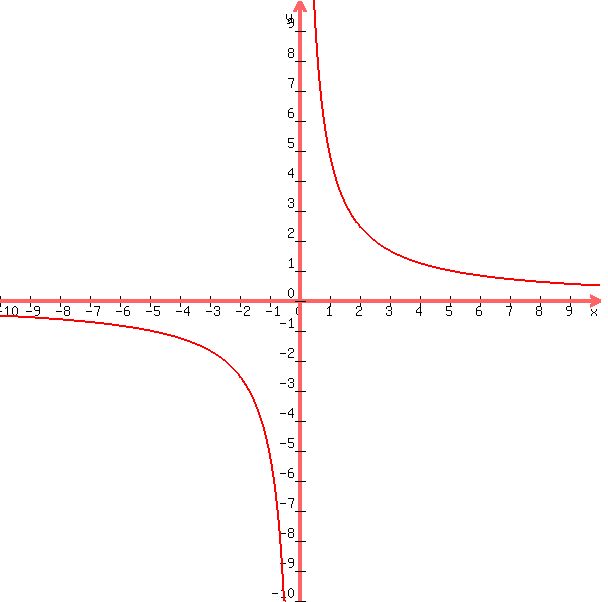|
Question 250477: if xy are both on one side of the equation is it linear?
how do I write an equation for the nth term of an arithmetic sequence?
How do I write an equation for function notation?
Answer by Theo(13342)   (Show Source): (Show Source):
You can put this solution on YOUR website! xy on the same side of the equation is not linear.
assume xy = 5
divide both sides of the equation by x to get:
y = 5/x
graph of this equation is shown below:

linear equation is of the form:
ax + by = c
ax * by = c is not linear.
------------------------------------------------------------------
nth term of an arithmetic sequence.
the formula is:
a[n] = a[1] + (n-1)*d
a[n] = the nth term in the sequence.
a[1] = the first term in the sequence.
d = the common difference.
Example:
Arithmetic Series is:
5,7,9,11,13,15,17,19,21
there are 9 terms in the sequence so n = 9
a[1] = 5
n = 9
d = 2
a[9] = 5 + (8*2) = 5 + 16 = 21
-----------------------------------------------------------------------------
functional notation is done as follows:
suppose your equation is y = 3x
what you are saying is that y is a function of x and the function is 3x.
you say y = f(x) = 3x.
f(x) = 3x is the functional notation.
x in f(x) is the argument of the function.
3x is the function, or the rules that tie the argument of x with the function of x.
the equation y = 3x yields the same answer as f(x) = 3x.
when x = 3,
y = 9
f(x) = 9
now take y = g(x) = 5x
this still means that y is a function of x except that now, the name of the function is g rather than f.
the name of the function can be anything you want it to be.
most times, the functions are names f,g,h, by convention, but they can be any letter of the alphabet or any other identifying name, like square(x), you want to assign except the argument name.
x(x) would be confusing.
consider the equation y = x^2
using functional notation, you can call this:
f(x) = x^2
g(x) = x^2
h(x) = x^2
square(x) = x^2
any of those names can be used, but you will mostly see f,g,h,k as function names
if your equation is y = 3*t, then functional notation for this would be:
y = f(t) because now t is the argument of the function rather than x.
equation would show as:
y = f(t) = 3*t
the equation is the same only the argument is different.
lastly, your equation is:
y = 3*x
you are asked for the value of y when x = 3
you would say y = 3*3 = 9 when x = 3
with functional notation, you would say:
f(3) = 3*3 = 9
you replace the argument of x with the argument of 3 and then solve.
|
|
|
| |